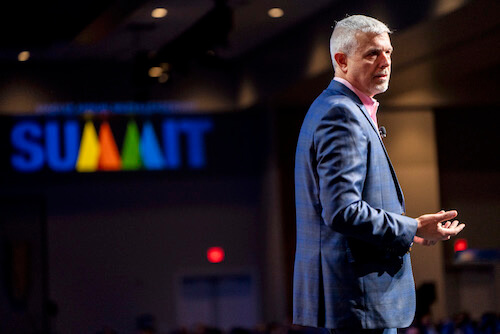Three Takeaways from the 2020 Sandler Summit

We had an outstanding gathering of clients, franchisees, and special guests in Orlando in early March of this year. The annual Sandler Summit is always an inspiring and energizing event for me, not least because of the remarkable positive feedback we get from people who have been using Sandler for a while. People say things like, “I wish we had started working with you ten years earlier than we did!” When you hear that kind of thing over and over again at an event like this, you know you must be doing something right.
We learned a lot from each other at this year’s event. Here are my three big takeaways from the 2020 Sandler Annual Sales & Leadership Summit.
1. Tactics matter. Salespeople are still as hungry as ever for reliable tactical guidance. In today’s environment, there’s a lot of information out there on the “mental” part of the sales professional’s job: what you think about, how you feel, what you believe about yourself and your market. That part of the equation is incredibly important, of course, and it figures prominently in Sandler’s famous Success Triangle, where we focus on three areas: attitude, behaviors, and techniques. And although attitudes and behaviors are probably the most important thing when it comes to sustaining success over time, when push comes to shove, salespeople still want to know: “What’s the tactic? What’s the strategy that I use in this particular situation?” I was reminded at the Summit of the reality that Sandler professionals have learned their own answers to those questions by actually applying the Sandler methodologies in their own worlds. These are not hypothetical situations, not what-ifs, but real-life selling situations. And I’ve noticed that when one of the Sandler tactics (such as the Up-Front Contract) delivers powerful results for someone, it tends to catch on quickly with other members of that person’s selling team. In Orlando, we heard from a lot of people who had internalized Sandler best practices and then successfully shared them with others in their organization. Very inspiring.
2. Willing and Able matters. The best professionals are the ones who are constantly looking to become both Willing and Able to do their job more effectively. It’s important that we always strive to be the best we can possibly be, and our clients learned at the Summit that there’s a grid that very successful companies use to monitor how their employees are tracking on both the Willing and Able scales. For example, if I’m a brand-new hire, I may be Willing to prospect, but if I haven’t been trained in prospecting, I may not yet be Able in that area. At the Summit, we talked about how the Willing and Able matrix is not an all-encompassing label applied to the individual, but rather a snapshot that shows where you are by each job function that you’re expected to do within your organization. We all need to know where we are on that Willing and Able scale in each area of our job, because we do so many different things. The matrix shows where you are headed, and it helps spotlight the things you want to work on next. That’s important!
3. Technology matters. In addition to learning about some exciting tools for remote training, we spoke at the Summit about the best ways to use technology to support salespeople on the go.








